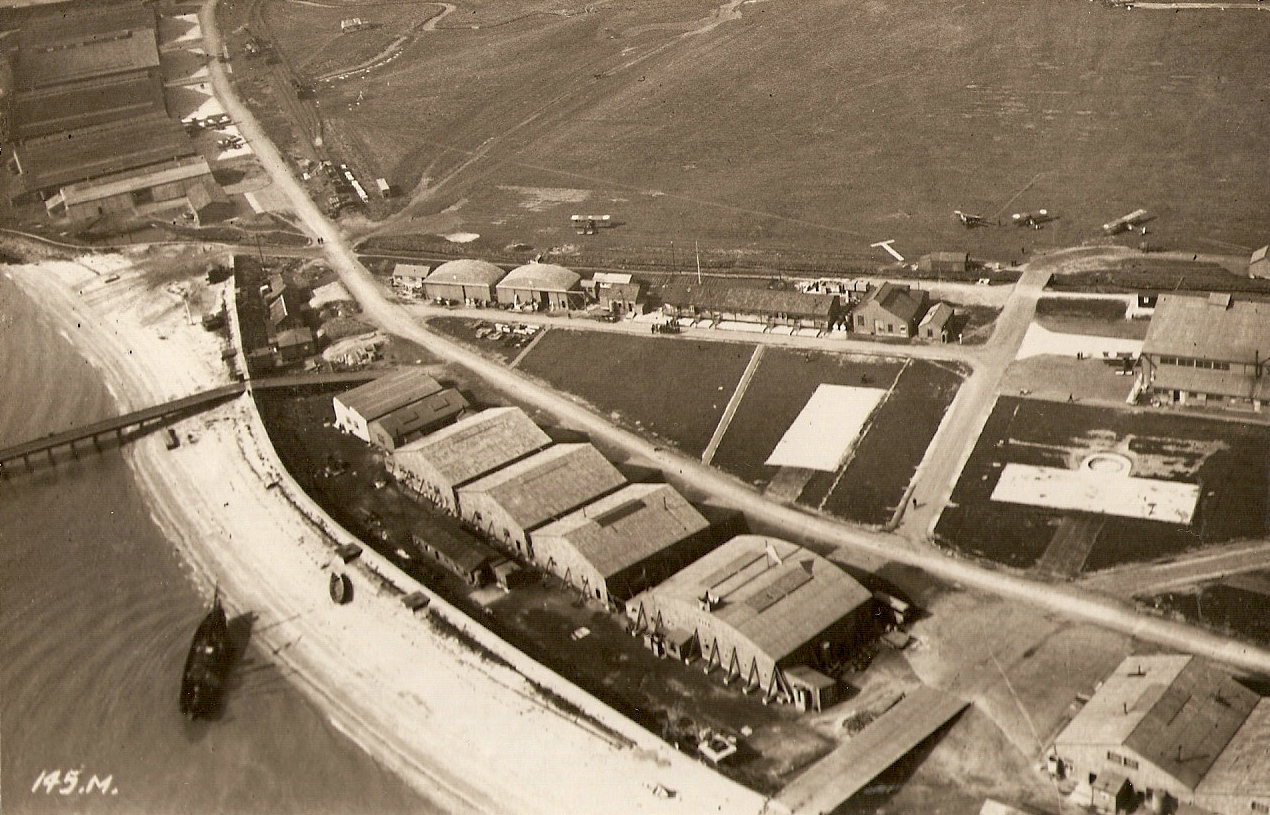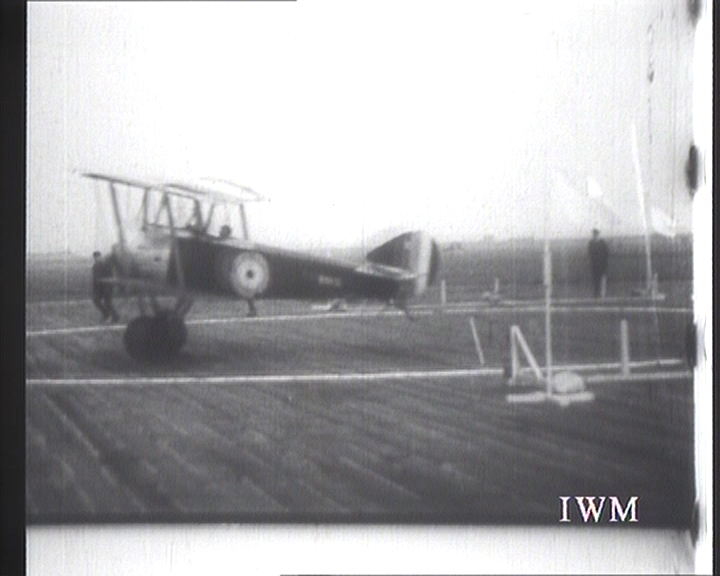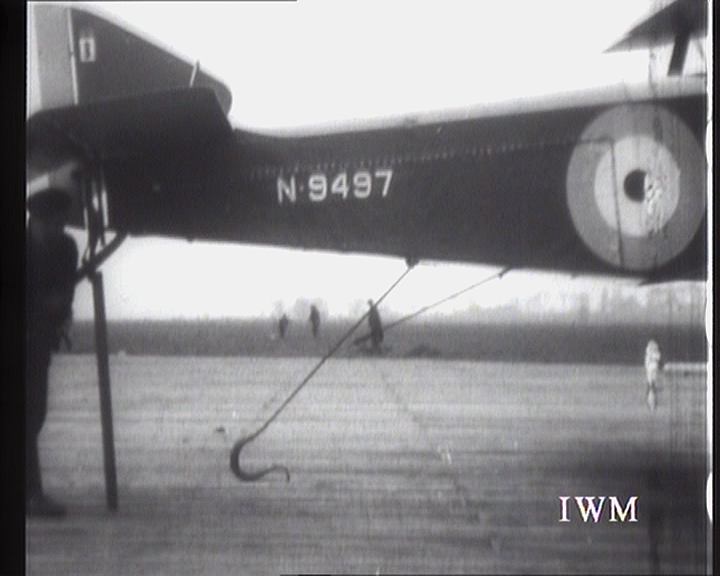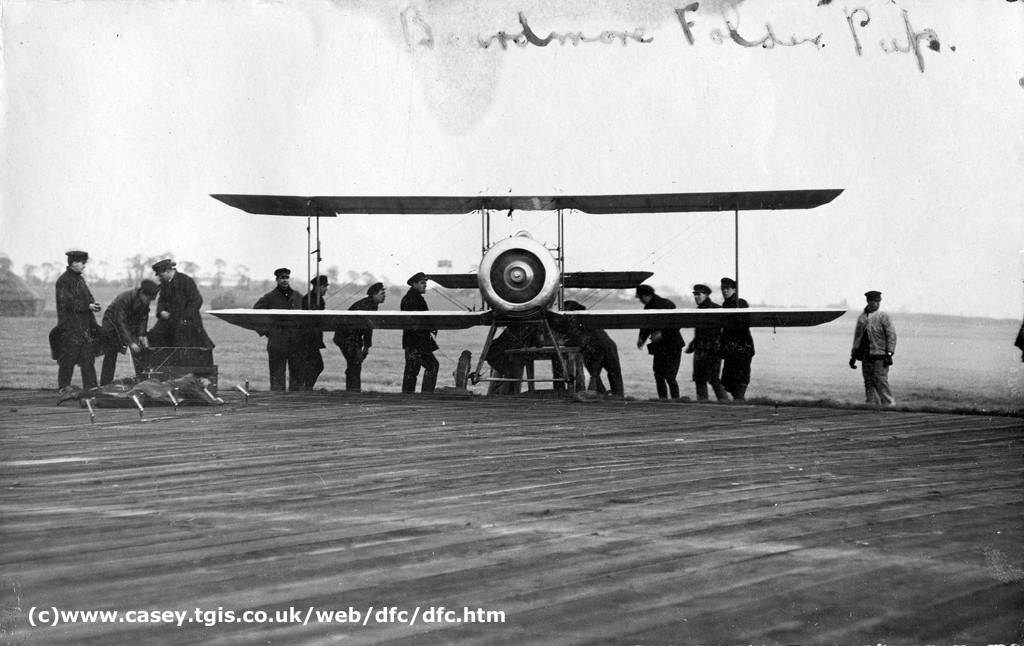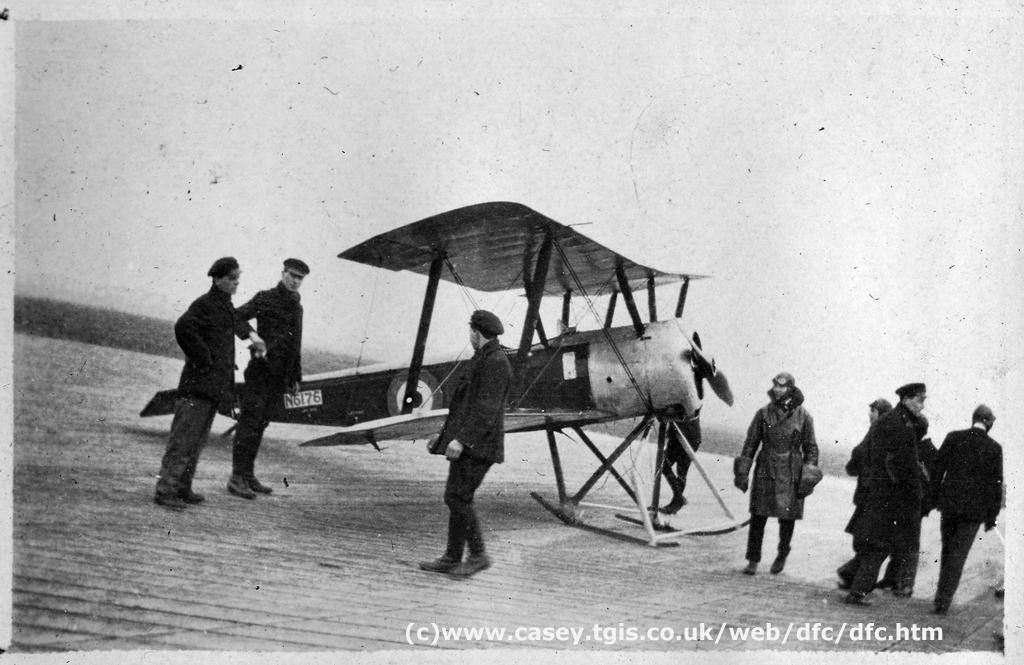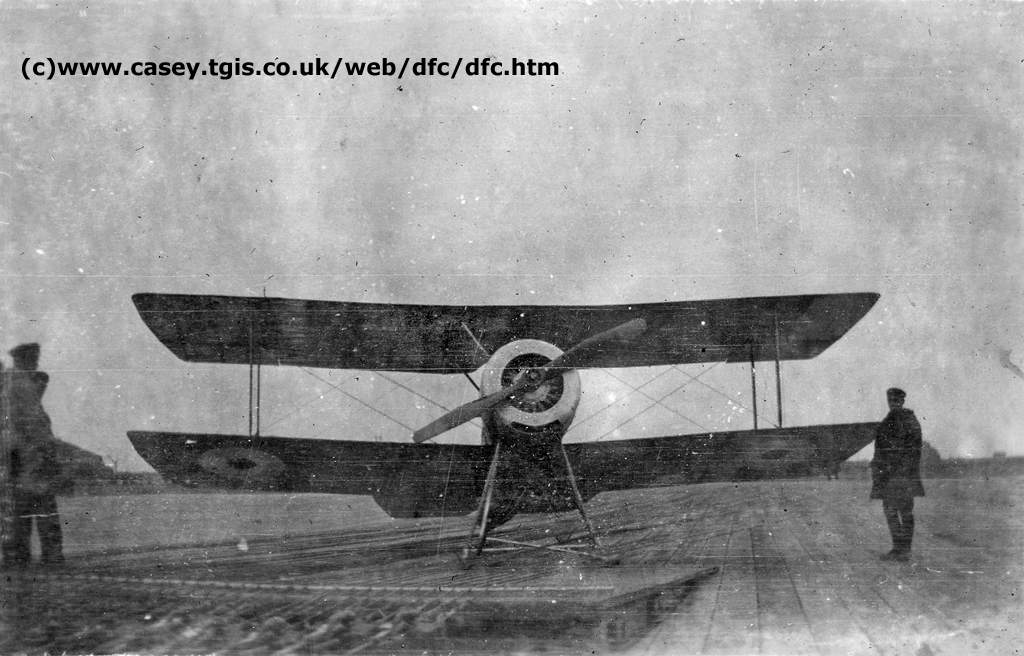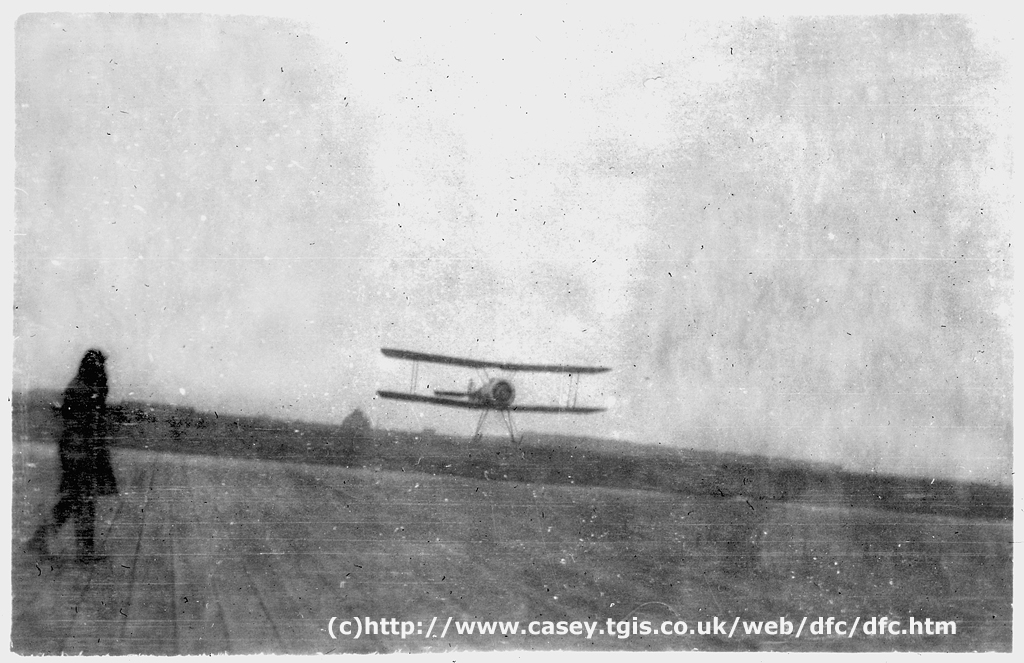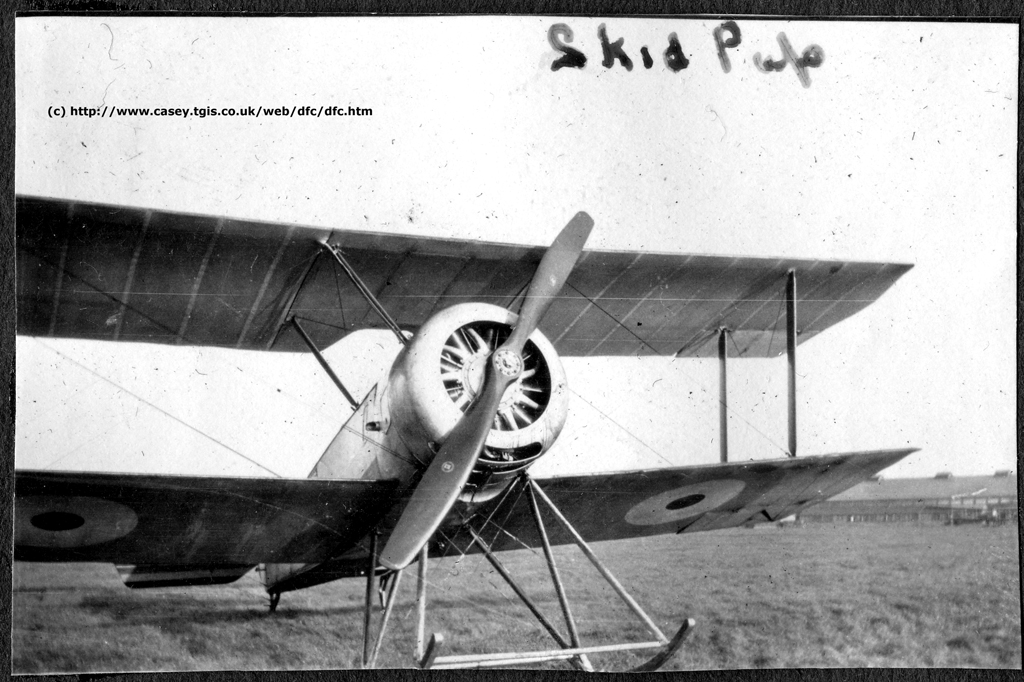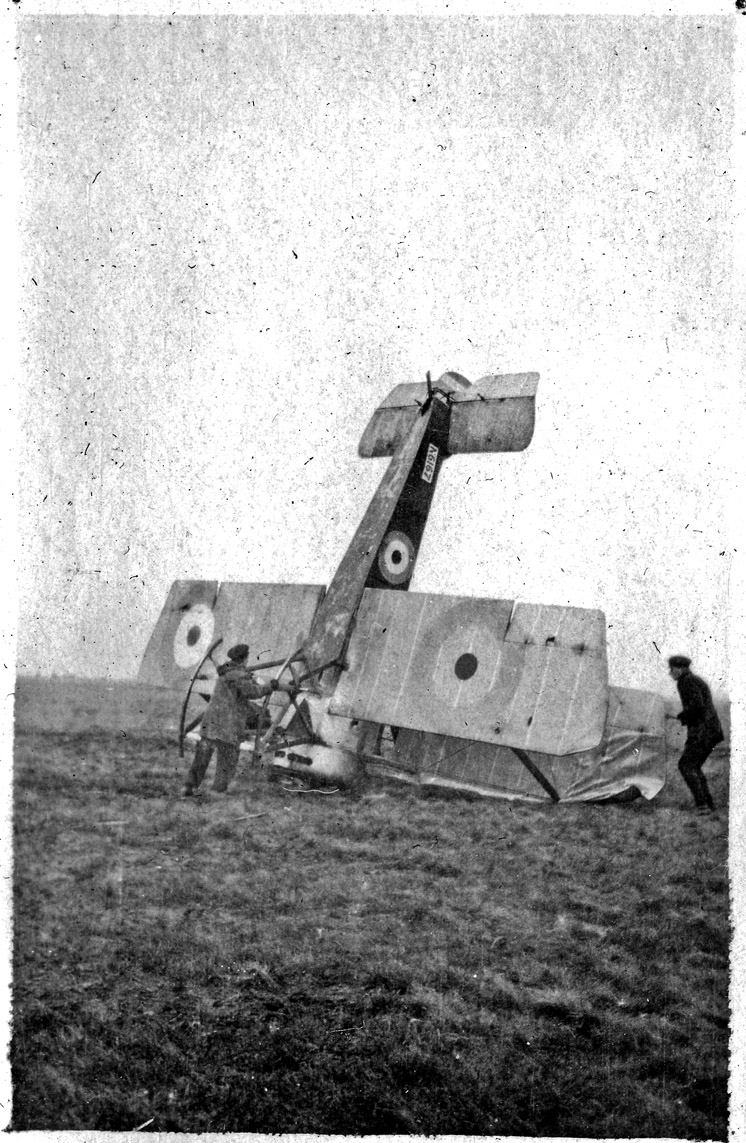Walter "Toby" Yeulett DFC
The Raid on Tondern 1918
Unless otherwise stated all material on this site is © William Casey and may not be reproduced without permission. Please contact me if you wish to use anything. Thanks.
You have been redirected to the new site http://www.tondernraid.com . Please update your Links! |
Deck Landing Trials at the Isle of GrainThe pictures can be clicked to see bigger versions. HMS Furious' initial carrier configuration consisted of a foredeck for aircraft to depart the ship and subsequently ditch in the sea although trials were conducted on landing aircraft on that foredeck. Steaming into the wind the ship's Sopwith Pups could match Furious' speed and then sideslip to above the deck where they could be pulled downwards by hand using leather straps attached to the underside of the aircraft. The first successful landing in this manner happened in August 1917. It was inherently dangerous to the extent that the first pilot to achieve it was killed in a later attempt when his aircraft went over the side. The concept of aircraft landing on ships had however been proven but research into better methods went ahead.
I have now received a DVD from the Imperial War Museum of these early trials at Grain in 1917 and 1918. It's approximately 6 minutes long and the full details of it, which can be ordered from the IWM, can be found at this link. The film is indexed as IWM631. For licencing reasons I can't put the video on here so below are just three screen grabs showing the frames to which the first arrestor ropes were attached. There is also one shot of the hook to catch the ropes on one of the Sopwith Pups used for testing. As you can see, in the early trials arrestor cables were hooked to wooden frames on either side of the deck but these were later replaced by more substantial anchorages once they'd determined optimum height and proved it a viable concept. The decking was also used to test take-offs and landings of skid equipped aircraft sitting in runners for the take-off. These tests are also featured in the film. Above is also an example of how the RNAS would occasionally make errors in their aircraft numbering. The Sopwith Pup originally numbered 9497 was painted with the number N9497 but the N94** series wasn't actually allocated until after the war ended. This aircraft was used for the trials throughout 1917 and into 1918 predominantly flown by Sqn. Cdr. Cave-Brown-Cave, FL CT Freeman and Sqn. Cdr. (later Wing Cdr.) HR Busteed. In January 1918 the Officer Commanding Aircraft on HMS Furious, Flight Commander W.G. Moore, was despatched to Grain in order to assist with both these trials and the subsequent pilot training. On the 2nd February, 1918, Wing. Cdr. Busteed (then the OC at Grain) wrote to the Director of Air Services that the 1½ Strutter trials had been "entirely satisfactory both in getting off and landing on the aerodrome" and requested that the remainder of Furious' pilots be sent to Grain for training. The Admiralty agreed and so my Great Uncle found himself at Grain in February 1918 (more pilots from Furious arrived there in March). The pictures below were taken during this period prior to returning to the newly modified Furious in April 1918.
A further problem was identified once aboard ship, one that that could not have been tested at the Isle of Grain airfield, and would lead to landings on the aft deck being abandoned. Unless the ship steamed very slowly, or indeed was stationary, the airflow over the deck was so turbulent that it made successful landings almost impossible. In essence the wind over the deck needed to be less than about 10 miles per hour otherwise turbulence was caused by the close proximity of the ship's superstructure to the front of the landing deck. As a result the landing system itself (the grid of wires) could not be properly tested with the superstructure in place and so trials on Furious were abandoned and aft-deck landing on her was never used operationally. In addition at slow speed or stationary and with little airflow over the deck it also created a risk that the aircraft would actually land too fast and thus be dangerous anyway. Only 13 landings took place just 3 of which were considered to be real successes with all the other aircraft suffering considerable damage or going over the side. The superstructure problem on Furious led to the development of HMS Argus with a full length flat deck with the previously tested wire system. Trials on board Argus commenced in September 1918 and were successful enough for HMS Hermes & HMS Eagle to be constructed with the same full length deck. HMS Furious was subsequently redesigned again to have the same deck and went on to serve into WWII. N.B. In 1925 the arrestor gear idea on Furious was abandoned completely since the deck was long enough for it not to be needed for such slow aircraft and the problems of disentangling each landing aircraft had also meant that only very slow landing rates could be achieved.
|
EU Cookie Law: This website uses a basic cookie to record how often each page gets visited. It does NOT identify individual visitors. More information here.
